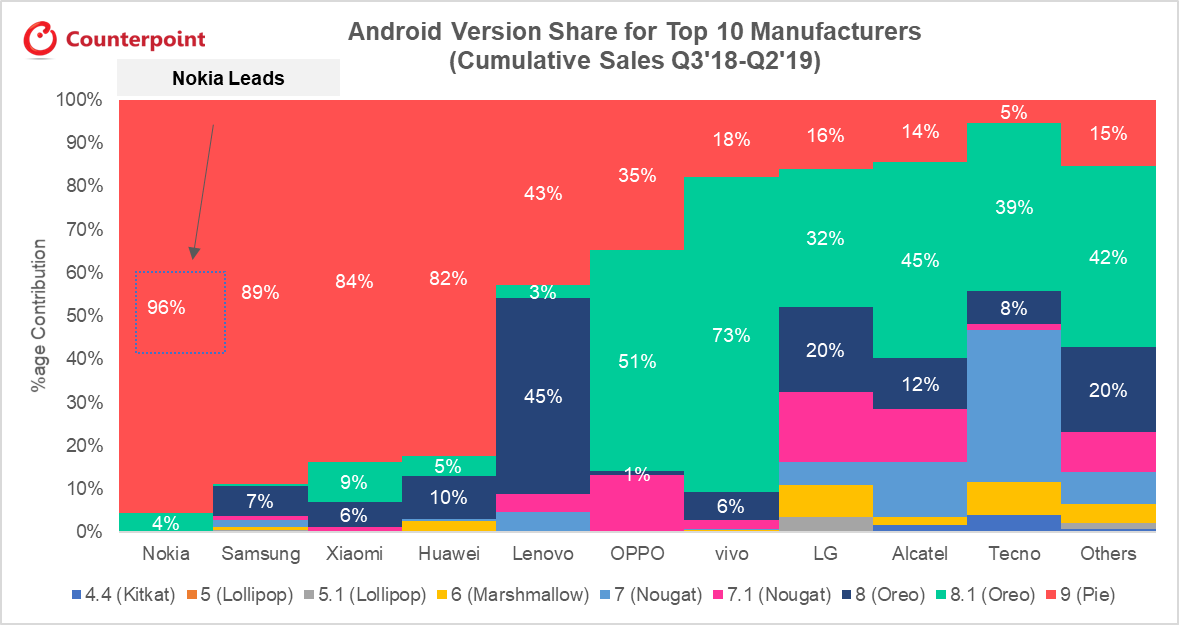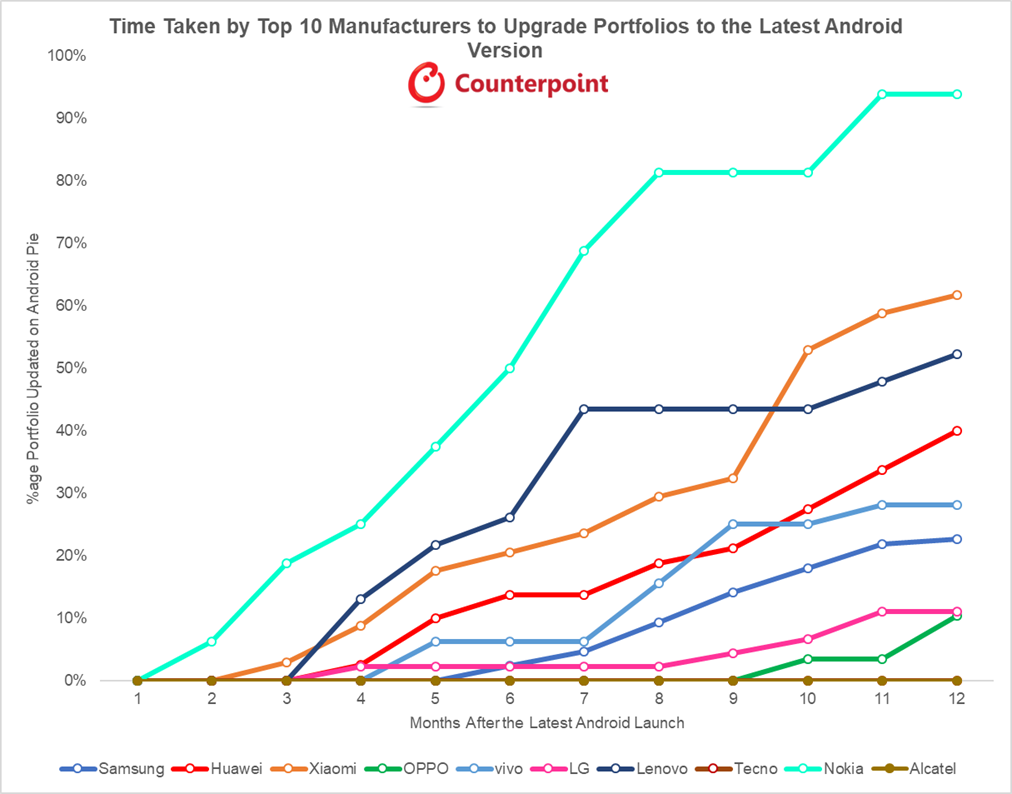• Key brands had fewer than a third of their sub-US$200 smartphones updated to the latest Android version. Nokia leads with more than 90% of its devices updated in the price tier.
• Only around a quarter of the top Android models are updated to the latest OS version.
Nearly 96% of Nokia smartphones, sold cumulatively since Q3 2018, are already running on Android Pie or have had an Android Pie update issued to them, making it the fastest brand to reach this level. This is according to the findings of Counterpoint Research’s latest whitepaper titled Software and Security Updates: The Missing Link for Smartphones.
We believe that device makers need to step up their efforts to provide regular software and security updates to their users. Except for Nokia and Lenovo, the performance of other device makers has been poor. Consumers have started to keep their smartphones for longer. They are also spending a little more when they do replace their devices.
The average time that consumers keep a flagship smartphone before buying a new device has been gradually increasing. In markets as diverse as China, Europe, and the US, it is now approaching 30 months. Clearly, keeping the software and security up to date is important to ensure consumers continue to enjoy a good performance and have security throughout their ownership. Manufacturers that fail to take this into account when planning the timelines for offering support to their devices with updates are potentially failing their customers.
Highlighting the whitepaper findings, Research Director, Peter Richardson, noted, “Operating system and security updates are an aspect of Android smartphones that get relatively little attention. In our experience researching the industry, we have seen few brands focusing on this. And perhaps because manufacturers are not talking about it, consumer awareness is also low. It doesn’t appear among the ten features consumers say they care about most, in our research.”
“Unsurprisingly, therefore, little effort is expended by the top manufacturers in focusing on regular updates to the operating system and device security, despite it being a critical element in the continued safe performance of the smartphone. Many of the key features including battery life, processor,camera and memory are linked to the performance of the underlying operating system. We believe it is important to the overall consumer experience and is likely to become more widely recognized as such,” Richardson added.

Source: Counterpoint Research White Paper: “Software and Security Updates : The Missing Link for Smartphones” | Android Version Share for Top 10 Manufacturers (Cumulative Sales)
Commenting on the performance of smartphone brands, Associate Director, Tarun Pathak, highlighted, “Among the top 10 smartphone makers, nearly 96% of Nokia smartphones, sold cumulatively since Q3 2018, are already running on Android Pie or have had an Android Pie update issued to them. Samsung closely follows Nokia with 89% and Xiaomi with 84%. Xiaomi is good at ensuring its mid-price range products launch with the latest version of Android.”
Pathak further added, “There are a lot of factors that play a role in issuing software updates. But some brands put much more effort into reducing the time lag from the release of the latest Android version to issuing the update to all their smartphones. Only a few brands commit to making sure their smartphones are always running the latest version. Nokia was the fastest brand in issuing the latest software updates covering 94% of its portfolio within a year of the launch of the latest Android version.”

Source: Counterpoint Research White Paper: “Software and Security Updates: The Missing Link for Smartphones” | Time Taken by Top 10 Manufacturers to Upgrade Portfolios to the Latest Android Version
According to Research Analyst, Abhilash Kumar, “High-priced devices are often updated first, but having the latest software is as important to mid- and low-priced products as it is to flagship devices. We, therefore, looked at manufacturers’ performance at updating software across all price tiers. By this analysis, Nokia stands out, again, as the brand most likely to update its full portfolio quickly.
Xiaomi and Lenovo also rank high in this metric. Brands like Alcatel and Tecno are the laggards. This is because these brands have broad portfolios, mostly in the sub-US$200 segment, and the lifecycle of their models tends to be short. Their products often transition from launch to end-of-life in as little as six months, which means they have less incentive to provide long-term updates.”
The comprehensive and in-depth whitepaper on “Software and Security Updates: The Missing Link for Smartphones” is available for download from our research portal here























